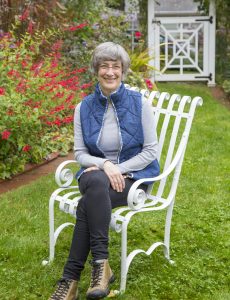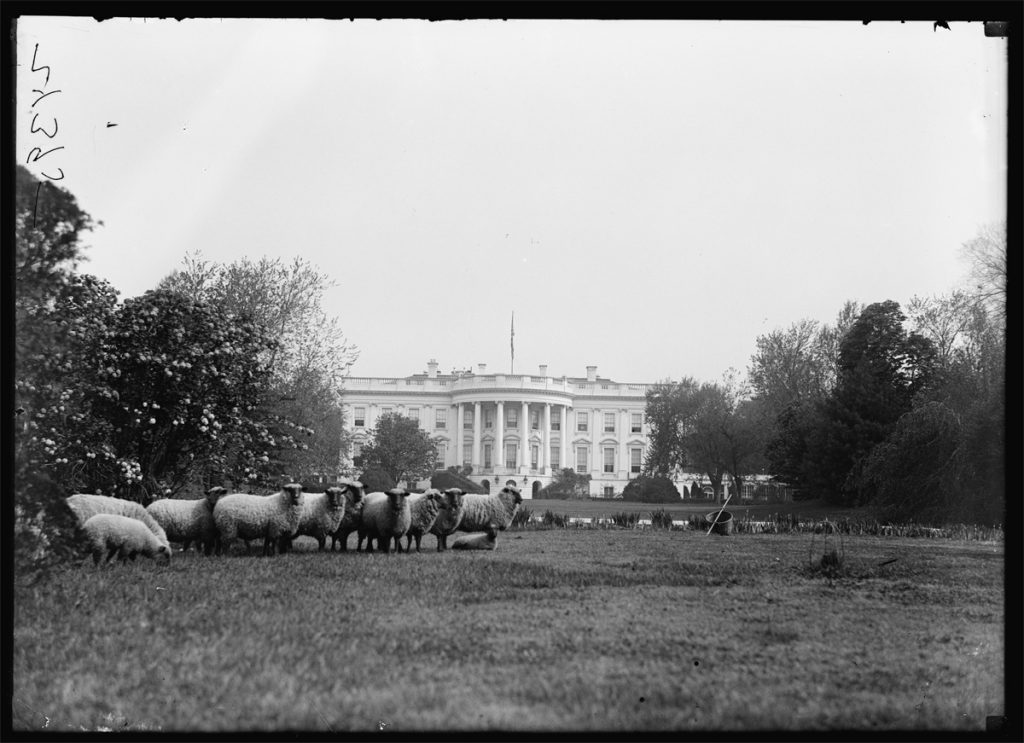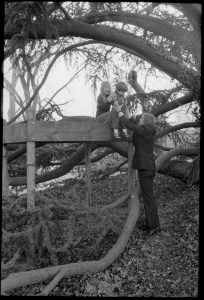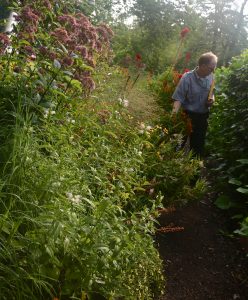Marta McDowell Talks About ‘All the Presidents’ Gardens’
Posted in Shop/Book Reviews on June 7 2016, by Joyce Newman
Joyce H. Newman is an environmental journalist and teacher. She holds a Certificate in Horticulture from The New York Botanical Garden.

In this presidential election year, a new book by NYBG instructor and garden historian Marta McDowell, entitled All the Presidents’ Gardens (Timber Press, $29.95), is both timely and refreshing for it avoids partisan politics entirely. As McDowell puts it,“whether gardeners lean right or left, blue or red, we are united by a love of green growing things and the land in which they grow.”
The book, available in the NYBG Shop, concentrates on fascinating stories, quirky presidential personality traits, and humorous observations—all of which vividly document how the White House gardens under different administrations reflect a changing America.
Recently McDowell talked about writing the new book and some of her favorite White House gardens. (The interview below has been edited for length.)
Q: The 18 acres that surround the White House have morphed time and again, starting with George Washington. How would you describe him?
A: He was a bit plant-crazy like most serious gardeners, and someone who really enjoyed visiting nurseries. For his own garden at Mt. Vernon, he planted so many roses that it took 12 days each June for the petals to be picked. Martha distilled the petals into rosewater.

Q: Washington died before he could see the results of his classical ideas for the White House gardens, ideas that were realized in part by one of his successors, Thomas Jefferson, whom you call “America’s patron saint of gardening” because of his Monticello gardens, not what he did at the White House. What did Jefferson do to the garden?
A: Jefferson was known for his views on limited government, so he could not be extravagant in his plans and plantings for the White House. He dramatically reduced the garden area by 70 acres from the original palace-like plans by L’Enfant, the architect Washington had hired.
Q: The book has 215 photographs and illustrations, including rare images of presidents and first ladies. One amazing vintage photo that was taken during the World War I period, under President Wilson, shows a herd of Hampshire sheep grazing on the White House South Lawn. You write that they were used to keep the grass short because garden workers weren’t available. Did you do a lot of the photographic research yourself, or were there researchers who helped?
A: I did almost all of it. And I couldn’t have done it without the help of Susan, Stephen, and the rest of the folks at the NYBG’s Mertz Library. Janet Evans, the librarian at the Pennsylvania Horticultural Society, found a couple of wonderful additions.

Q: What did you enjoy most about writing the book?
A: Finding all of the connections between what happened at the White House and what happened in the rest of American gardening. One example is the Obama Kitchen Garden, especially because of its connections to Thomas Jefferson and schoolchildren. A White House assistant chef traveled to Monticello in 2009 to get seeds and plants that Jefferson grew in his own garden and then planted them in Michelle Obama’s edible garden, part of her “Let’s Move” program. With more than 50 varieties of vegetables, the Obama Kitchen Garden brought local food to the President’s kitchen, in the same way the gardens had helped to feed earlier administrations like those of James Madison and Abraham Lincoln.
Q: Do you have another favorite area of the White House gardens today, or a favorite former area?
A: I was smitten with the gardens that Rachel Lambert Mellon designed for the Kennedys. Both the Rose Garden and the Jacqueline Kennedy Garden work with the building that embraces them. Mellon was such an interesting designer, horticulturist, and person.
Q: In the book’s epilogue, you describe your first Garden Tour Day visit to the White House. What experiences stand out from later visits?
A: I had a lovely August morning visit with Supervisory Horticulturist Jim Adams (National Park Service), including a private tour of the grounds. It was great to approach the gardens the way the First Family and their guests would, from inside the House. Jim also showed me a place where you could see some of the char marks on the interior wood—left over from the British burning in 1814. It was a busy day for the gardeners—among other things, the spring annuals were being replaced. It was a beehive of activity, which, Jim said, always happens when the First Family is out of town. I was especially impressed with the kitchen garden and adjacent pollinator garden. Burgeoning with produce with the most beautiful plant labels I’ve ever seen. The White House calligraphers do them on slate!

Q: At the back of the book, there are some intriguing biographical sketches of the 14 “First Gardeners” showing how they significantly shaped the gardens by dealing with unique challenges, like helicopters landing on the lawns, or seating for 1,000 people in the Rose Garden. Is there one head gardener story that you would single out?
A: During the Kennedy administration, the head gardener, Irvin ‘Whitey’ Williams, put a life-sized statue of male deer with antlers outside near the oval office—visible from the president’s windows—as a humorous reminder of Harry Truman’s famous slogan “The buck stops here.” It’s still there!
Join Marta McDowell for a book talk on Friday June 17th from 10–11:30 a.m. at NYBG. Register at nybg.org/adulted or call 718-817-8747. ($19 Members / $25 Non-Members)

